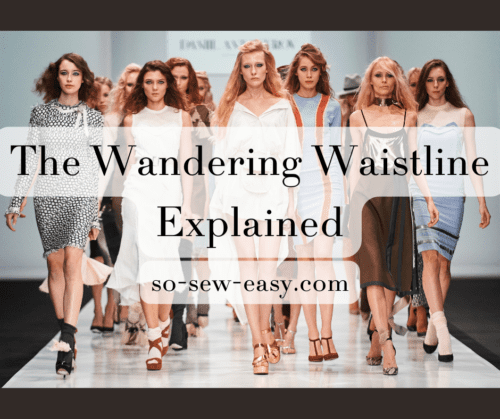
Pulling on a pair of vintage 1980s pleated shorts (sharkstooth print, no less), I found myself thanking the fashion gods that the best of fashions always keep coming back for a revival, thank goodness for retro style! The pleated high waist, which was a no-no for so long, finally acceptable to wear again and I’m grateful, so comfortable and so practical!
The Wandering Waistline
Consider for a moment, the insanely low waistline of the hipster pants and jeans from the late ’90s and early ’00s, the inevitable plumber’s bottom, and the hassle of making sure that your undies (which tended to end up sticking out) didn’t have sheep or anything else ridiculous printed on them. To think that that was perfectly acceptable and yet a picture of 1980s pleated pants at the time looked totally unsavory and rather hilarious, someone actually wearing them was considered tragically uncool. It’s strange how we change and how fashion changes with us, hopefully for the better!
Now the high-waisted skirt and trousers are back and reasonably acceptable to wear again, whilst you’ll be hard-pressed to find a low-cut hipster in any store!
The whole experience really got me thinking about the waistline, such an integral element of fashion, the way it varies over time and place, and really how important the waistline style is to the fashion movement as a whole. I thought it would be a good idea to take a look at different waistline styles, what body types they flatter, and where they fit into the fashion spectrum.
Basque / Antebellum / V-shaped Waistline:
Here’s a waistline that’s perfect for those curvaceous pear-shaped or hourglass-shaped ladies. This classic waistline is usually reserved for ball gowns and wedding dresses and lengthens the torso whilst the full skirts normally associated with it will hide a multitude of chocolate-induced sins (like serious hips and bottoms). With the bottom of the V or U well below the belly, between the hips, this style works better with a flat tummy, although the stiff material of the bodice might do well to cover those extra lumps and bumps as well.
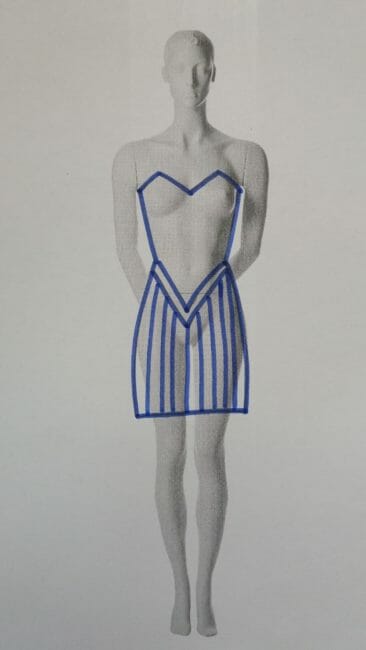

Dropped / Drop Waistline:
Now, this waistline we don’t really see too often in everyday fashion, maybe the fashion cycle has yet to bring this one back in full force. Think 1920s, long cigarette holder, the wavy bob, and the feather headband, and then you’ll know what a dropped waistline is. We do still see this in ballgowns and wedding dresses, usually with a full skirt. This waistline lies at the mid or upper hip and works best on slim women who are looking to gain the impression of height or women with an hourglass figure…but if you already have a long torso, stay away from this style.
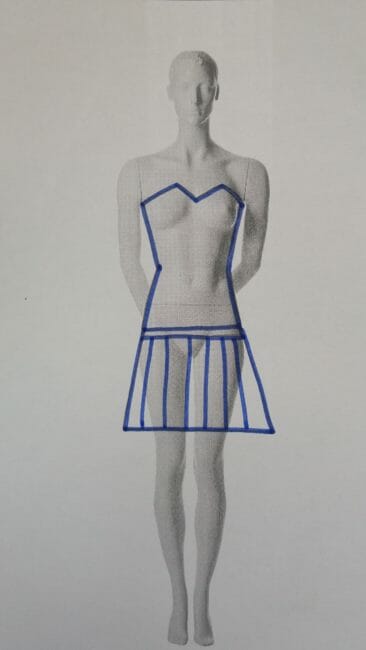

Empire Waistline:
This everyday and formal favorite sits just below the bust, usually with a skirt cascading straight down from it. This style accentuates the bust and hides fat tummies, giving an impression of height and slimness…not to be worn if you have a hefty bust as it really does make the ladies look larger!
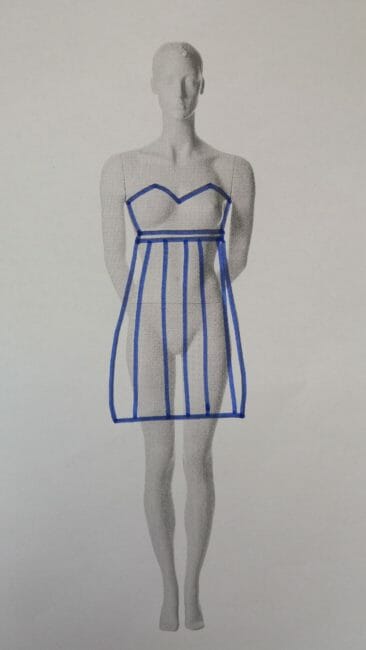

Raised Waistline:
A horizontal waist about an inch above the natural waist, this line is often confused with the Empire line, which falls just a little higher, right beneath the breasts. This style lengthens the legs, curves the hips, and shortens the torso. This effect also applies to mid and high-waisted trousers. This won’t look good if you have a short torso or buxom hips!
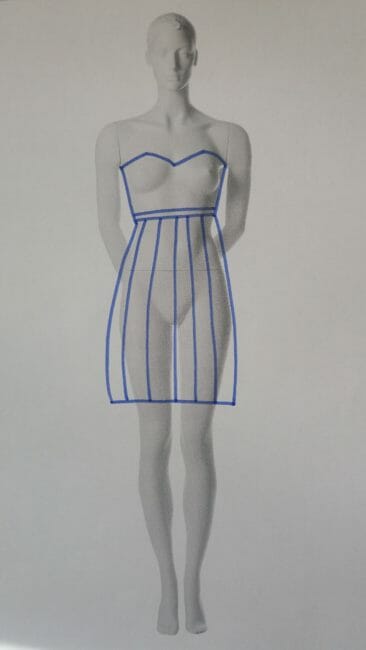

Diagonal / Asymmetrical Waistline:
An interesting style, most often seen in formal, wedding, and office wear. Running diagonally across the waistline, this line is above the waist on one side and below the waist on the other. This waistline slims down a larger figure but won’t look right on a short person as it really cuts the figure in half.
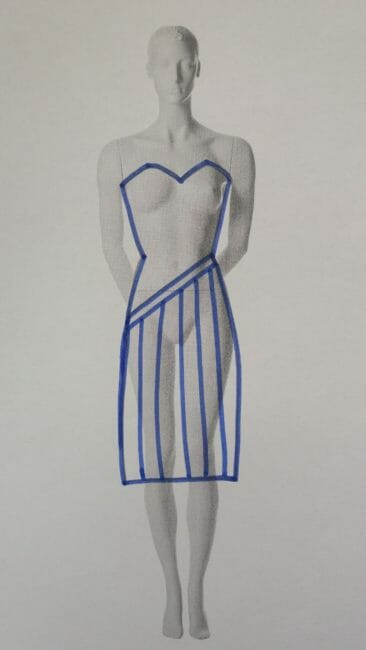

Inverted V / U Shape Waistline:
This style, also mostly seen in office and formal wear, wedding, and ballgowns, shortens a long torso and lengthens short legs.
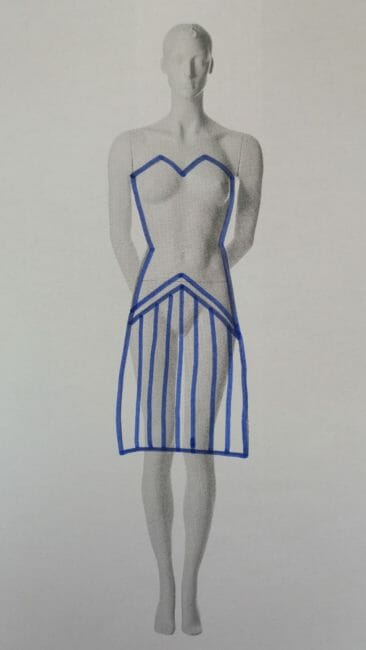

Natural Waistline:
A horizontal waistline, falling directly on the natural waist. Arguably the most comfortable of waistlines, for both a two-piece ensemble, like trousers and a top, and a dress…the waist is where the body naturally bends and it makes sense that the narrowest point should be there. This waistline looks great on all body types as it enhances all natural curves, except for the apple-shaped figure, where the waistline is the largest point. Extra-tall women appear shorter with a natural waistline because of the way it divides the figure.
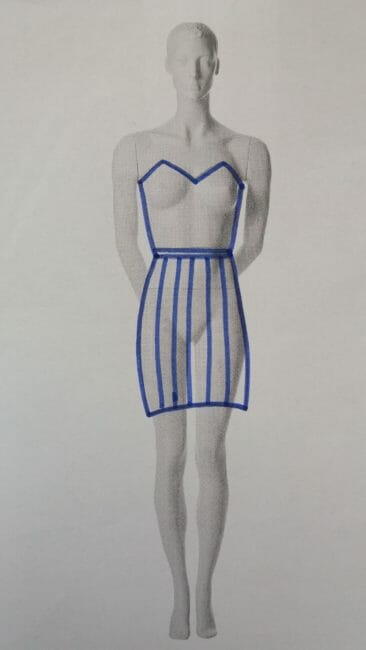

No Waistline:
These dresses are sewn together in panels and have no waistline at all. They are suitable for any body type and create a slimming effect.
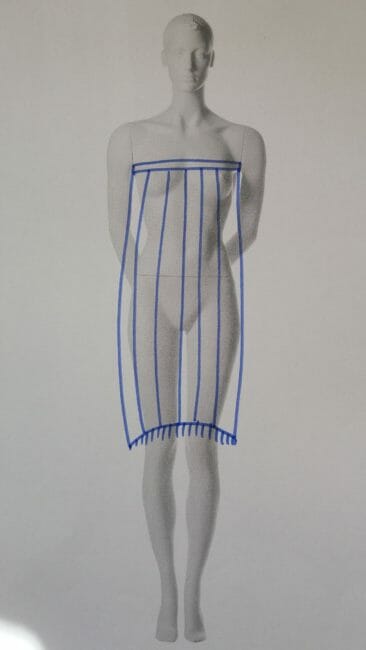

Wedding dresses and ball gowns are one thing…but it's really in our everyday street fashion that the wandering waistline strikes me the most.
Consider the wandering waistline on men's trousers for instance, which reaches its lowest point at the age of about 16 years old (where the boxers must be seen and the pants held up with one hand, goodness forbid), it falls across the natural waistline in the late 20's and the 30's, after which the real waistline is never seen again as pants reach up, as high as just 7 inches below the armpit for gentlemen in their 70's and upward…a known fact.
Indeed, fashion is a funny thing, influenced by not just time and place but a wealth of other factors and it's exciting just to wonder…” what on earth is coming next?”








I find it interesting that when pants or a skirt falls at the natural waistline it is considered to be a high waist.
Spot on about men’s waistlines moving up to the armpits at 70+
Made me laugh out loud.
Thanks for the interesting guide and really clear drawings
Since I am somewhat busty (36C), a small waist, and have practically no rear, my preference is has always been separates. Because I can usually find shorts, skirts, or pants to fit.
Blouses and shirts are more of a problem since I am only 5’3″ tall with fairly short arms. And dresses are a real problem. I think that the current designers think that American women are 6 feet tall. But by the US consensus the average height of women in the US is actually 5’4″ +/-2″ .
As I sew, I usually spend most of my time adjusting purchased clothing…
I would make a ..Tailien .. recommendation, not dependent on the .. figure of the wearer .. but rather on the … fullness and volume … of the skirt in a dress. A natural waistline actually looks good on many dresses that are not voluminous. But with dresses with widths and voluminous skirts, a Basque tailie is always preferable. It .. muffles .. the impression of feeling … bulbous … or even … thick … in a voluminous dress. Even very slim wearers have this feeling and therefore opt for a different dress model.